“Many will look but few will see”
– Philip Thiel, from memory.
“How does the impulse to draw something begin?”
– John Berger, on the cover of his Bento’s sketchbook
*
Context
My sketchbooks reveal a desire to understand life and to express what I see of its significant moments and places.
I have culled drawings from two sketchbooks at turning points of my life where, to answer Berger, the impulse to draw may have been rooted.
The natural and the man-made
The sketches are naturalistic and they all search for an essential quality of place.
They stand at some kind of limit: between properties, between land and water, between private and public … essentially between eons of evolution on earth and the man-made “now” they are rooted in.
The ball point medium
The ball point ink is not soluble in water to produce gradated wash … yet the ball point line can go from a whisper to a scream, from a single line to a gradated texture and to the blackest black hole … and you can close the sketchbook without having to wait for the ink to dry!
Best of all, the ball point medium can wait, without drying up, till the mind sees what the eyes look at.
Path along the Doncaster River’s edge, Quebec, 10-6-‘01
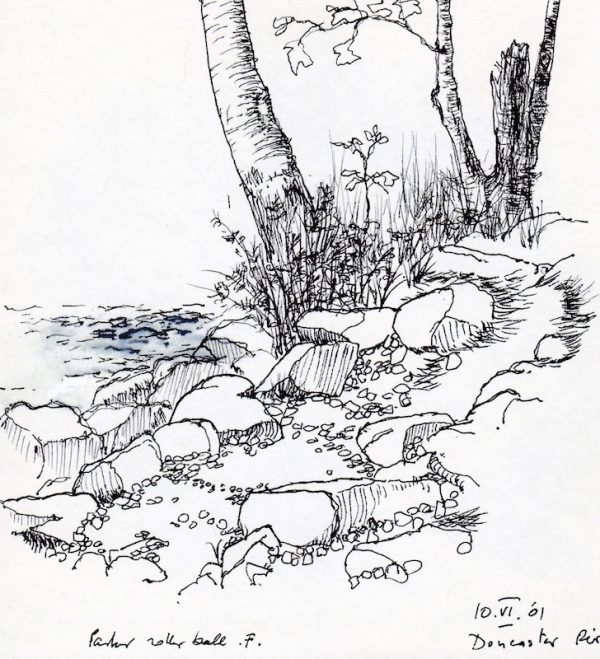
It is said that plants on earth originated in the oceans; methinks these wild grass, plants and trees sink their roots in something of their geologic original waters.
The hollowed apple tree … Montreal, Summer ‘97
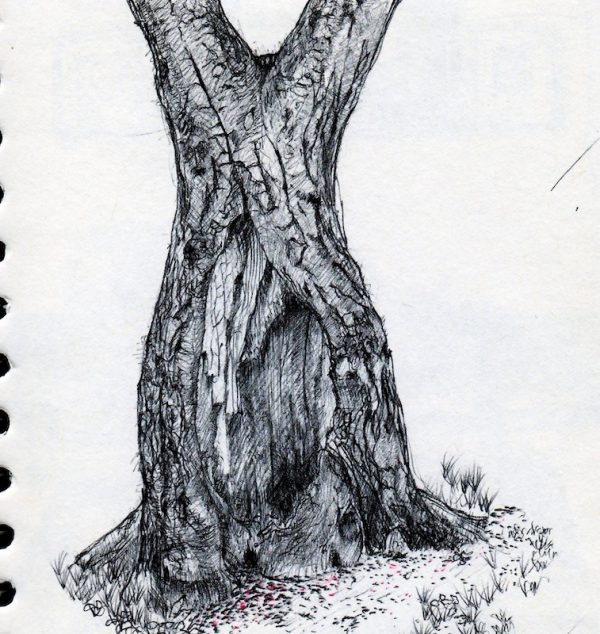
I can remember to this day sitting in front of this elder tree clinging to life and still bearing wild apples, in spite of being hollowed out by illness and at death door step.
I drew it out of respect but also under its spell.
At the edge of the yard … Maine, 23-8-‘05
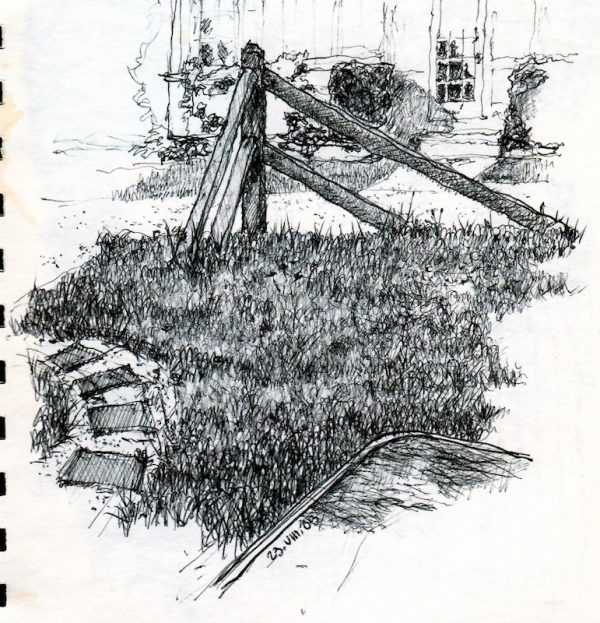
On my last vacation to Maine, the rented house side yard accommodated a sitting place under a tree.
It is from this vantage point, near the frontier-fort-like fence, that the feature image was drawn, and that I saw how this lone corner post marking the entrance to the house stood … definitely intent on remaining there, come hell or high water!
Porch corner … Quebec, 11-8-‘05
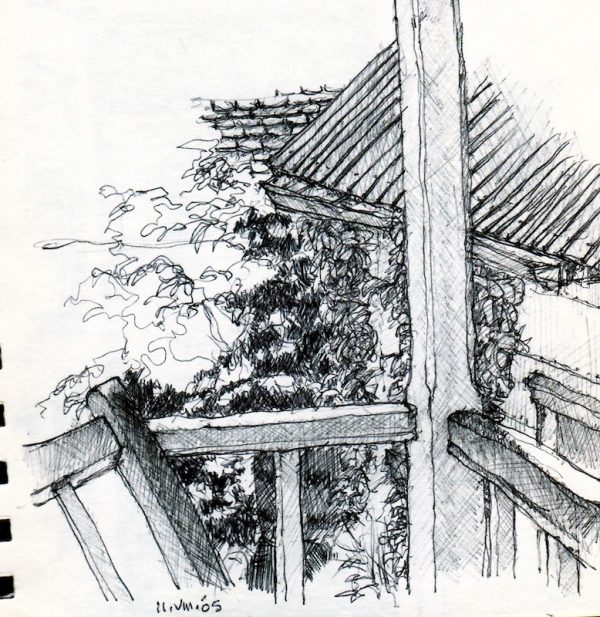
Here is another “corner post” of sorts, marking the end of the verandah-like porch surrounding the old estate farm house now occupied by good friends.
The coziness of the proximity to the other building belies the immense grazing lot that is now the front yard of the property extending to the St Lawrence river.
Seeing through corner windows … Maine, 10-7-‘97
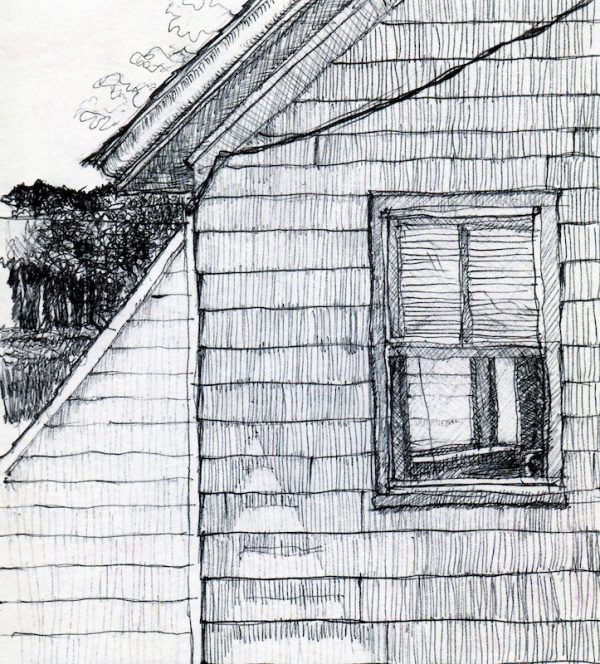
Not far from the remains of a seaside forest that can be seen left of the buildings, there, at a few feet distance from our window, are the open corner windows of the house next door … so abruptly close!
I therefore applied myself to draw every shingle course, corner molding and utility wire: to furnish the in-between space, to temper that abruptness and to provide something of a psychological transition to the see-through effect.
The wooden foot bridge, Quebec 4-9-‘05
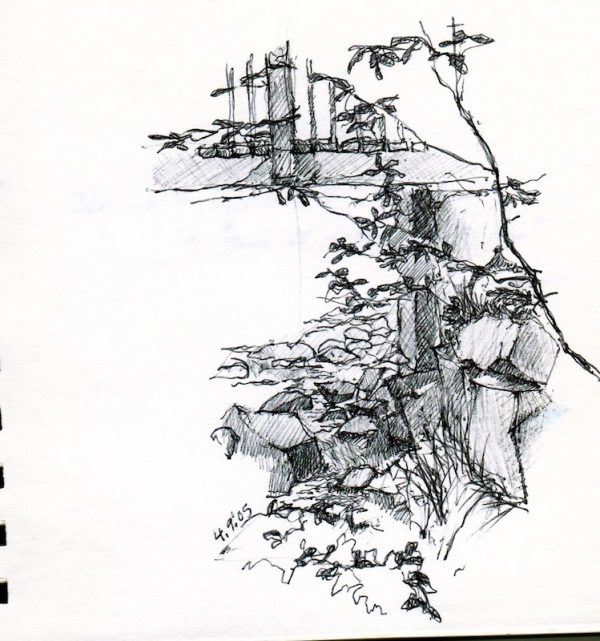
The architect in me has a weak spot for concrete and wood construction; this combination of materials in the foundation and the spanning element of the foot bridge seems so sympathetic, to the stream and boulders, as to merit its place in conclusion of this post touching on the natural and man-made.
End note
I suppose there are many ways to go from looking at, to seeing the world; in this endeavor and for drawing inspiration, I am indebted to Henry Moore’s “Sheep Sketchbook”.
Moore, Henry: Henry Moore’s Sheep Sketchbook
With comments by Henry Moore and Kenneth Clark
Thames and Hudson, London, 1980
(All drawings by the author)
